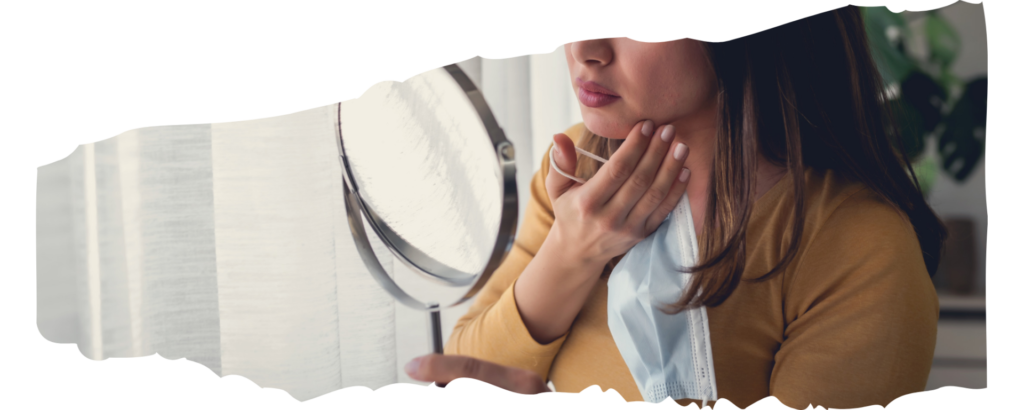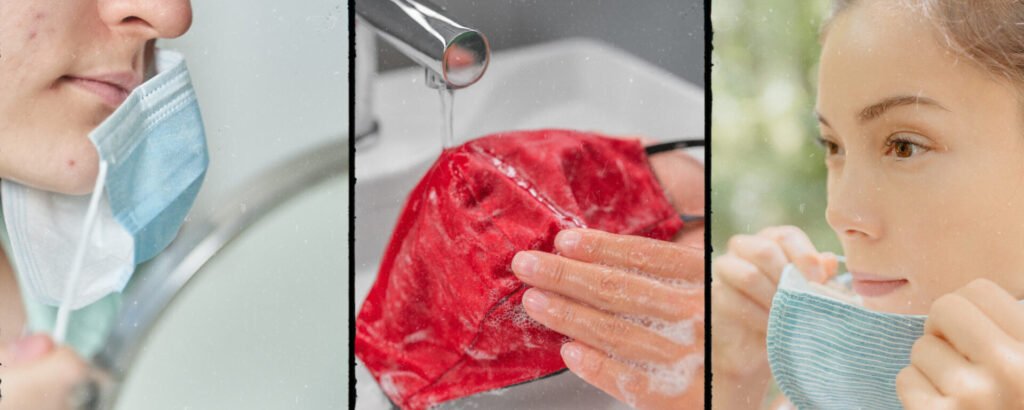Maskne | Fact or Fiction?

The struggle is real people!
But what exactly is maskne? What causes it?
And the million dollar question – How to treat and prevent further breakouts?
WHAT IS MASKNE?
Maskne is an outbreak of spots, redness or irritation on the face, or ‘acne mechanica’ as professionals often call it. It’s a new term to cover a number of skin conditions that are brought on, or irritated by, wearing a face covering, such as:
- Acne – when your pores become clogged with oil, dead skin cells, and dirt.
- Rosacea – wearing a mask can cause flare-ups, and lead to skin irritation.
- Contact dermatitis – can develop when you’re allergic or sensitive to your mask material.
Sorry to be the bearer of bad news, but if you have one or more of these skin conditions you may be more likely to develop maskne.
It’s most commonly found where the mask touches your face, so along the bridge of the nose, the mouth and chin area, and also can extend to the cheeks and jawline.
Wearing a face mask or covering for short periods of time isn’t likely to cause too much irritation, but wearing for longer periods, combined with environmental factors can lead to increased breakouts.
WHAT CAUSES MASKNE?
Basically wearing a face covering for long periods makes a nice humid environment that sweat, oil and bacteria love, and this can lead to clogged pores.
Also the friction of the material can irritate and chafe your skin. This can cause the hair follicles to break open and become clogged by sweat and bacteria, which can in turn lead to something called folliculitis. Doesn’t sound very pleasant, hey?
The weather can influence maskne too! During the Winter, maskne is mainly caused by friction on dry, delicate skin, whereas Summer maskne is more likely to be caused by clogged pores.
Who knew!? So now on to the bit I know you’re most interested in…

HOW TO TREAT | PREVENT MASKNE?
Ok, so what can you do?
- Wash your face with a gentle cleanser – We should be washing our faces 3 times each day – morning, evening, and when you get home for the day after wearing your mask.
- Use a non-comedogenic moisturiser – Hands up, who knows what this is? I popped it in because every day is a school day – It just means that it likely won’t clog pores, so avoid thick products, and go for lighter, easily absorbed creams. This will also hydrate your skin after washing so it doesn’t become dry and irritated, and form a protective barrier between your mask and skin.
- Regularly wash your mask – I’ve been guilty of this one, you pop it back in your handbag and then forget about it – But it’s the worst thing you can do. Wash after every use, or alternatively, wear disposables and bin after every use.
- Give your face a break from makeup – Might sound a simple fix if you aren’t really a make-up wearer, or if you don’t leave the house without a ‘full-face’ it may your worst nightmare. Either way, going ‘au naturel’ will do your face the power of good!
- Wear the right type of mask – There are so many masks and coverings on the market now, but make sure you go with one that will give you adequate protection while being kind to your skin. Make sure it fits your face snugly but doesn’t rub your skin too much, and has 2 or more layers of fabric. Go for a natural material like soft cotton, and avoid synthetic fabrics, such as nylon.
- Use Topical Creams – such as this Soothing Serum, to calm your skin – This one contains tea-tree oil and other ingredients to fight spot-causing bacteria.

So there you go, that’s what Maskne is all about! We hope that we provided an insight, and helped a little if you are suffering.
Although maskne can be incredibly frustrating, it’s important to keep wearing face coverings during the COVID pandemic. Regular face-washing, moisturising, and wearing the right type of mask may help prevent skin problems.
If your maskne is more severe, or if it still persists after trying these recommendations, be sure to follow up with a dermatologist or healthcare provider.
Be Your Happiest You #BYHY
Love
Sharon
